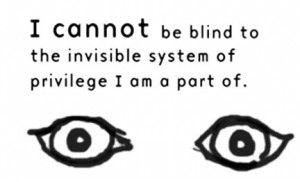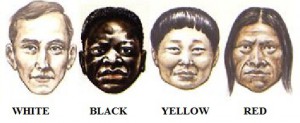Rachel Dolezal recently visited a daytime talkshow called The Real, where she answered the hosts’ questions about her racial identity and her views on the definitions of whiteness and blackness.
Tag: White Privilege
11 Types Of Racists
If there’s one thing to know about racism, it’s that racism (and race) is incredibly complex. Many people think racism means one group of people hates another group of people. However, racism manifests in all kinds of subtle and insidious ways. It operates on both a micro and macro level. For this reason, it’s so hard to talk about racism, or even recognize it when it’s going on.
So sorry, just because you’re not burning crosses on some black person’s lawn doesn’t necessarily mean you’re not part of the problem. It’s important that we recognize the different ways racism exists in the world, because being aware is the first step in fixing the problem. The fact of the matter is, there’s no one specific kind of racism or racist. There are many types of racists, and they come in all forms, from the blatant to to the inconspicuous. Below is a list of just a few of the different kinds….
Click here to read more.
VIDEO: How Racist Are You? with Jane Elliott
“For this Channel 4 documentary Jane Elliott, a controversial former schoolteacher from Ohio, is recreating the shocking exercise she used forty years ago to teach her nine year-old pupils about prejudice.
Elliott is asking thirty adult British volunteers – men and women of different ages and backgrounds – to experience inequality based on their eye color to show how susceptible we can all be to bigotry, and what it feels like to be on the other side of arbitrary discrimination.
Does Elliott’s exercise still have something to teach us four decades on and in a different country? Presented by Krishnan Guru-Murthy, the exercise is observed throughout by two expert psychologists, Prof Dominic Abrams and Dr Funké Baffour, who will be unpicking the behavior on display.”
Video: How racist are you?
Questions:
What do you think about this social experiment?
Are we all more racist than we realize or would like to admit?
Solving the School Discipline Gap
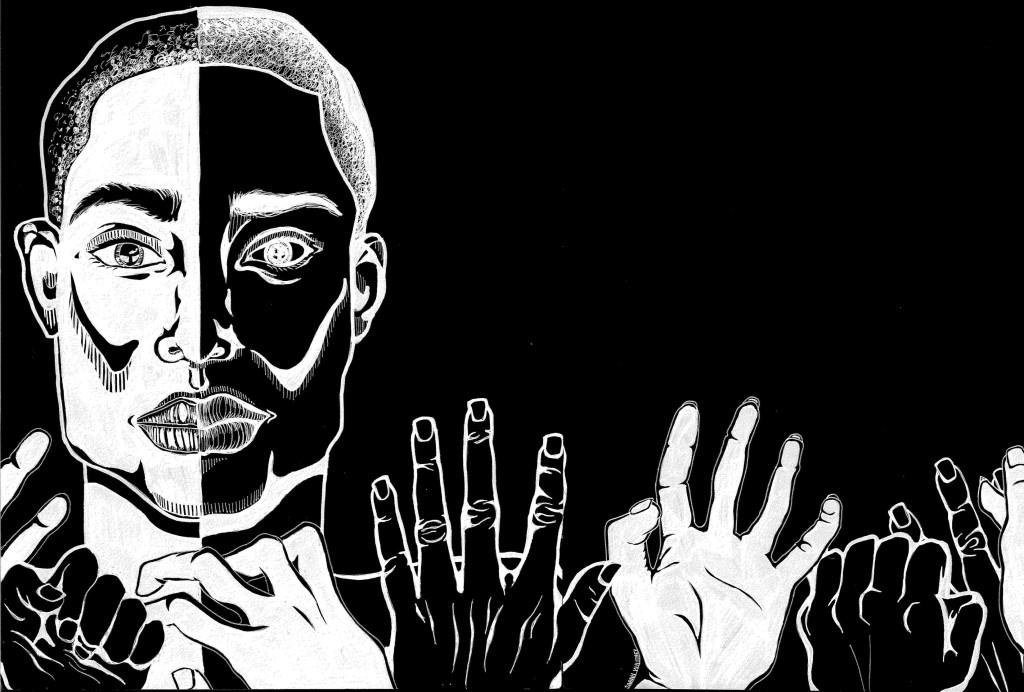
Joseph C. Phillip frames the debate in terms of students’ family life and single vs. two parent homes, rather than bigotry in school disciplinarians. He thinks that focusing only on race-talk on this issue will lead to unsatisfactory solutions that institutionalize the idea that there is something inherently different culturally that leads to black children misbehaving.
“A 2006 study claims Seattle school teachers discipline black students more than their white peers. How about a solution that doesn’t involve pulling the ‘race card?’ […] We can either march forward under the illusion that a discipline gap exists because teachers are a bunch of racists, suspending black children more than white for no other reason than the color of their skin. Or, we can finally realize that a breakdown in the traditional family structure, and an embrace of the destructive social behavior and attitudes that have accompanied it, is playing the devil with our children.”
Click here to read/listen to more.
Questions:
Do you agree of disagree with Phillip’s interpretation of this issue?
Do you think that solutions should be focused on race or family life? Another related factor? A mix of these?
The Model Minority is Losing Patience
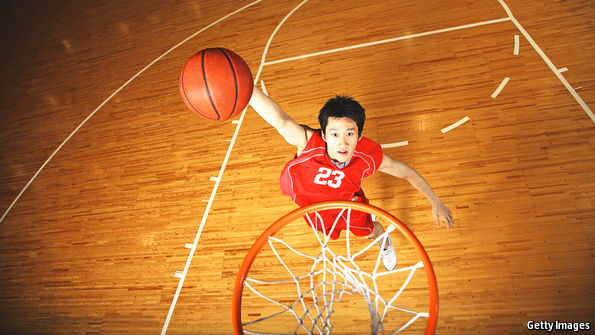 Asian-Americans are the United States’ most successful minority, but they are complaining ever more vigorously about discrimination, especially in academia
Asian-Americans are the United States’ most successful minority, but they are complaining ever more vigorously about discrimination, especially in academia
This article looks at the history of Asian immigration and opportunity, and discusses possible factors that contribute to the high rate of academic achievement in the Asian-American population, along with the apparently disproportional university admissions numbers. It also considers the “bamboo ceiling” — the phenomenon of Asians excelling in lower and middle levels of professions, but no being visible in the upper echelons — and points at several potential reasons behind this discrepancy, from ingrained shyness to a dearth of mentors.
I’ve highlighted some excerpts below, but I encourage you to click here to read the whole article.
On Asian-American academic achievement:
“Asian-Americans make up 5.6% of the population of the United States, [yet] they make up more than 30% of the recent American maths and physics Olympiad teams and Presidential Scholars, and 25-30% of National Merit Scholarships. Among those offered admission in 2013 to New York’s most selective public high schools, Stuyvesant High School and Bronx High School of Science, 75% and 60% respectively were Asian. The Asian population of New York City is 13%.”
“[A study] rejected the idea that Asians were just innately much cleverer than whites: there was an early gap in cognitive abilities, but it declined to insignificance through school. The higher socioeconomic status of Asian parents provided part of the explanation, but only a small part. […] Asian outperformance is thanks in large part to hard work. […] study showed a sizeable gap in effort between Asian and white children, which grew during their school careers.”
“Another study […] shows that Asian-American parents are a lot likelier to spend at least 20 minutes a day helping their children with their homework than any other ethnic group.”
 On apparent racial discrimination in academia:
On apparent racial discrimination in academia:
“Some Asians allege that the Ivy Leagues have put an implicit limit on the number of Asians they will admit. [Upon examining admissions data] Asian-Americans need 140 SAT points out of 1,600 more than whites to get a place at a private university, and that blacks need 310 fewer points.”
“Top universities tend to admit blacks and Hispanics with lower scores because of their history of disadvantage; and once the legacies, the sports stars, the politically well-connected and the rich people likely to donate new buildings […] have been allotted their places, the number for people who are just high achievers is limited. Since the Ivies will not stop giving places to the privileged, because their finances depend on the generosity of the rich, the argument homes in on affirmative action.”
“…the Asian-American community is unwilling on the whole to oppose affirmative action. It tends to vote Democratic, and many of its members recall the years when they were a despised, not a model, minority. So those who dislike the way the system works tend to argue for it to be adjusted, not abolished…”

On the “bamboo ceiling”:
“It is true that although Asian-Americans do remarkably well at school and university, and have high average incomes, in the workplace they are under-represented in top jobs […] Asians do well in the lower and middle levels of companies and professions, but are less visible in the upper echelons.”
“Academia […] is stuffed with Asian-American professors, but among America’s 3,000 colleges there are fewer than ten Asian-American presidents”
“High-flying Asian-Americans […] suggest that cultural patterns may contribute to the group’s under-representation at the top. ‘There’s something in the upbringing that makes Asians shy’ […] ‘We’re brought up to be humble, […] My parents didn’t want to rock the boat. It’s about being quiet, not making waves, being part of the team.’ […] Asian-Americans are a large, diverse group exposed to a range of influences, but those who do reflect such patterns may be less likely to bid for leadership, even if they are highly qualified.“
“…Asians may find getting mentors particularly tough. Researchers [found that when students reach out to meet successful academics], [w]hite men got notably more responses than other groups; Asian-Americans of both sexes got fewer. Since the Ivies produce a disproportionate number of CEOs, Congressmen and judges, the apparent bias against Asian-Americans at leading universities may also keep Asians out of leadership spots.”
On political power:
“[A study shows that] it was only when Jews had gained political power that the Ivies stopped discriminating against them.”
“Perceptions that Asian-Americans are being treated unfairly, especially in the workplace, may push more of them into politics.”
Questions & Food for thought:
What do you think about the statistics or stereotypes employed this article? Do you think they are backed by legitimate reasoning or can you discern any areas for potential bias?
What are your thoughts on affirmative action and similar reparations?
Is it fair for high achieving individuals in a certain racial group are considered for admission differently than those of other racial groups?
Is it problematic that race is considered and that there may be racial quotas for university admissions? Or is it necessary (and morally just) to consider race if we’re striving for a fair system of academic admissions, given how much race has shaped socioeconomic opportunities historically?
The article provides many factors that influence the level of achievement of Asian Americans in formative schooling, higher education, and the professional world. Do you agree or do you believe there are other things to consider?
Do you think that an increase of Asian American political representation will change anything?
Black Man in a White Coat by Damon Tweedy, M.D.
“One doctor’s passionate and profound memoir of his experience grappling with race, bias, and the unique health problems of black Americans
When Damon Tweedy begins medical school, he envisions a bright future where his segregated, working-class background will become largely irrelevant. Instead, he finds that he has joined a new world where race is front and center. The recipient of a scholarship designed to increase black student enrollment, Tweedy soon meets a professor who bluntly questions whether he belongs in medical school, a moment that crystallizes the challenges he will face throughout his career. Making matters worse, in lecture after lecture the common refrain for numerous diseases resounds, “More common in blacks than in whites.”
Black Man in a White Coat examines the complex ways in which both black doctors and patients must navigate the difficult and often contradictory terrain of race and medicine. As Tweedy transforms from student to practicing physician, he discovers how often race influences his encounters with patients. Through their stories, he illustrates the complex social, cultural, and economic factors at the root of many health problems in the black community. These issues take on greater meaning when Tweedy is himself diagnosed with a chronic disease far more common among black people. In this powerful, moving, and deeply empathic book, Tweedy explores the challenges confronting black doctors, and the disproportionate health burdens faced by black patients, ultimately seeking a way forward to better treatment and more compassionate care.”
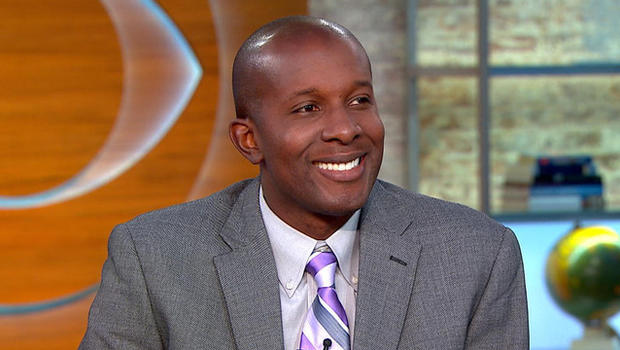
Click here – Time magazine book excerpt
COMIC: White Privilege, Explained
White privilege can be a tricky thing for people to wrap their heads around. If you’ve ever called out white privilege before, chances are you’ve heard responses like “But I’m didn’t ask to be born white!” or “You’re being reverse racist.”
The next time that happens, just show the nay-sayer this succinct comic by Jamie Kapp explaining what white privilege is — and what it isn’t.
Click through for the full comic!
Conversations on Philosophy and Race
Click here to read an ongoing series of interviews with philosophers on race by George Yancy, philosophy professor at Emory University.
Color-Blindness Is Counterproductive

Many sociologists argue that ideologies claiming not to see race risk ignoring discrimination.
Educational Resources
Below are links to some relevant educational pages… have at it!
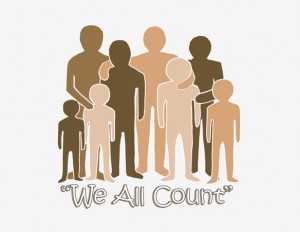
Racism:
Racial Equity/Diversity Education:
- http://thesocietypages.org/
- http://www.ensemble-rd.com/en
- http://www.everyday-democracy.org/en/index.aspx
- http://www.communitychangeinc.org/
- http://www.victimsofcrime.org/home
White Privilege:
